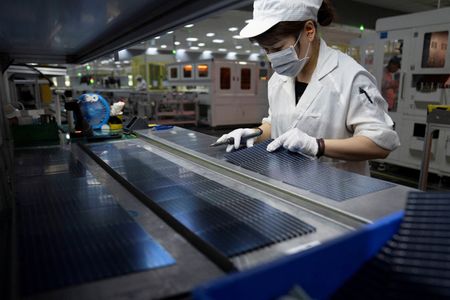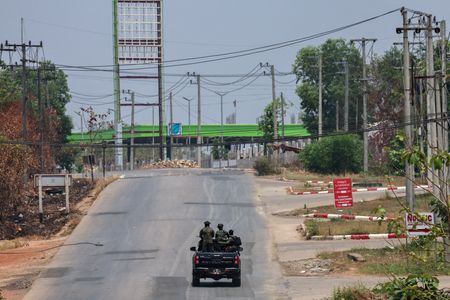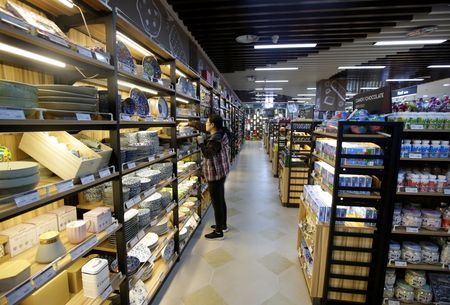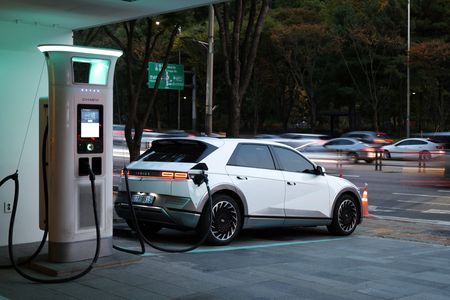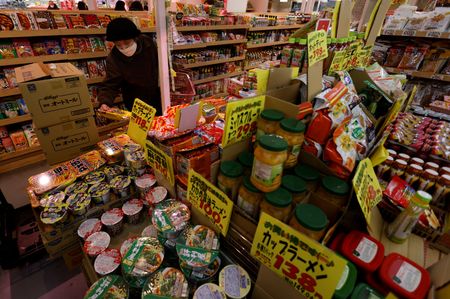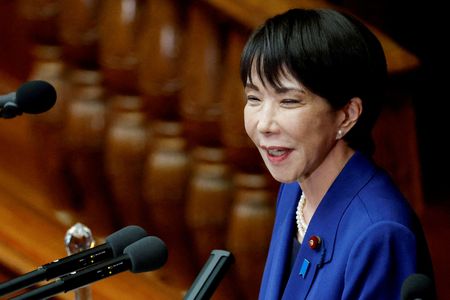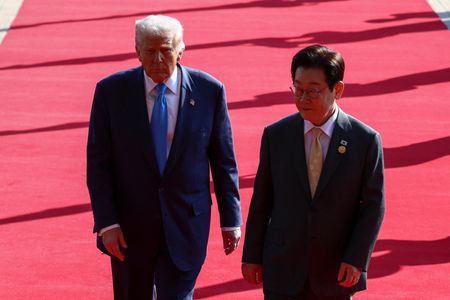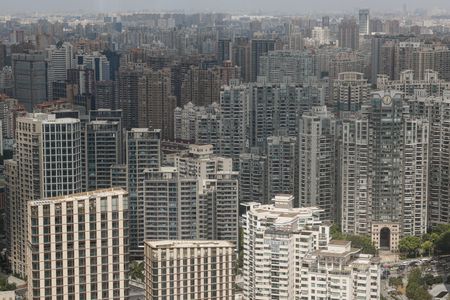By Shoon Naing and Sudarshan Varadhan
(Reuters) -When Thailand cut power supply to Myanmar across its western border this year, it intended to curb online scam centres linked to regional networks trafficking hundreds of thousands of people.
However, the move also hit the wider community, pushing hospitals and some offices to install solar panels, said Zaw, a rescue worker in Myawaddy town just across the Thai border. Homes, too, made the switch.
“Three out of four people now rely on solar panels, with businesses using multiple panels,” said Zaw, who did not want to disclose his full name, fearing retribution.
Myanmar’s electricity supply has deteriorated since the 2021 military coup and ensuing civil war, exposing millions to chronic blackouts, with a cash-strapped government hit by Western sanctions unable to maintain power infrastructure.
The World Bank estimated the country’s operating power capacity plunged to 2015 levels in 2024, describing electricity supply in conflict-affected areas as “catastrophic”.
Chinese firms have helped fill the gap, supplying cheap solar panels.
NATURAL GAS SHORTAGE SAPS GENERATION
Light intensity data – a proxy for economic activity and electricity access – analysed by the United Nations revealed an average 8% annual decline after the 2021 coup.
The drop is largely due to a shortage of natural gas, Myanmar’s main generation fuel, as domestic production has declined and the government has halted imports of liquefied natural gas due to a foreign exchange shortage, the World Bank said in a June 2024 report.
Former U.S. President Joe Biden’s administration froze about $1 billion of Myanmar assets and imposed sanctions, some of which have been eased by the Trump administration. Western sanctions have restricted access to technical support, spare parts, and expertise to maintain infrastructure, such as transmission lines damaged in the civil war.
Myanmar’s junta said earlier this year generation capacity had plunged by nearly half from pre-2021 levels. Data on the Ministry of Electric Power’s website shows output has not changed much since 2018.
The information ministry did not respond to detailed questions on power supply and demand, and the junta’s spokesperson did not answer calls from Reuters.
CHEAP SOLAR PANELS FROM CHINA
To combat the power crisis, households and businesses are embracing solar, according to interviews with a dozen residents, business owners and panel and battery sellers across the Southeast Asian country.
“Unlike most of Asia, where we’re seeing corporate demand drive solar growth, energy security concerns and fuel shortages are the key drivers in Myanmar,” said Linda Zeng, renewables analyst at Fitch Solutions unit BMI.
Solar panel imports from China, Myanmar’s largest supplier, more than doubled in the nine months through September to about $100 million, according to Chinese customs data. Shipments have risen over eightfold from pre-pandemic levels, the data showed.
Shops, restaurants, and workshops seeking reliable power for lighting, refrigeration and electronic payments, as well as water kiosks, clinics, and schools increasingly use small solar systems, said an official from an international development agency working in Myanmar.
“I have about 10 refrigerators. The electricity here is not regular, so I had to use solar panels,” said an ice cream seller from the ancient city of Mawlamyine, who declined to be named due to fear of retribution.
Household solar installations have surged from a few hundred in 2019 to roughly 300,000 in 2025, as users switch from diesel generators to solar panels with storage, said Ken Pyi Wa Tun, chairman of Parami Energy, which sells solar panels and diesel generators in Myanmar.
“A household solar-plus-battery-plus-inverter can be acquired for under $1,000 and power essentials, run for four to five hours and power 2 AC units,” Ken Pyi Wa Tun said.
While that is too expensive for most homes, it is cheaper than the roughly $7,000 for a small diesel generator, plus fuel costs of $50 to $100 per week, he said, predicting solar could potentially power 2 million to 2.5 million Myanmar households.
IT’S NOT ABOUT CLIMATE GOALS
Myanmar’s surging solar imports mirror a trend of increased solar adoption to escape erratic power supply in lower- and low-middle income countries such as Pakistan, Iraq, Sri Lanka, and Afghanistan.
They are among the fastest-growing markets for panel exports from China, the world’s dominant solar manufacturer, data from energy think-tank Ember showed.
“If the grid is not reliable or the prices too high, then people will do it themselves. And now they can, thanks to solar,” said Richard Black, director of policy and strategy at Ember.
Solar adoption, driven by necessity rather than policy, could disrupt traditional utility models, challenge forecasts about fossil fuel demand and complicate grid management, analysts say.
In Pakistan, a surge in affluent residents ditching the country’s costly grid power by installing solar panels has forced utilities to raise prices even further for remaining customers.
Diesel imports by Myanmar declined 11% in the first 10 months of 2025, data from analytics firm Kpler showed, while solar panel purchases grew.
“It is not like we are using them for clean energy or for some environmental reasons. We are a country with civil war. We are just using them out of necessity,” said a resident in the Bago region.
(Reporting by Sudarshan Varadhan and Shoon Naing; Editing by Tony Munroe and Sonali Paul)

